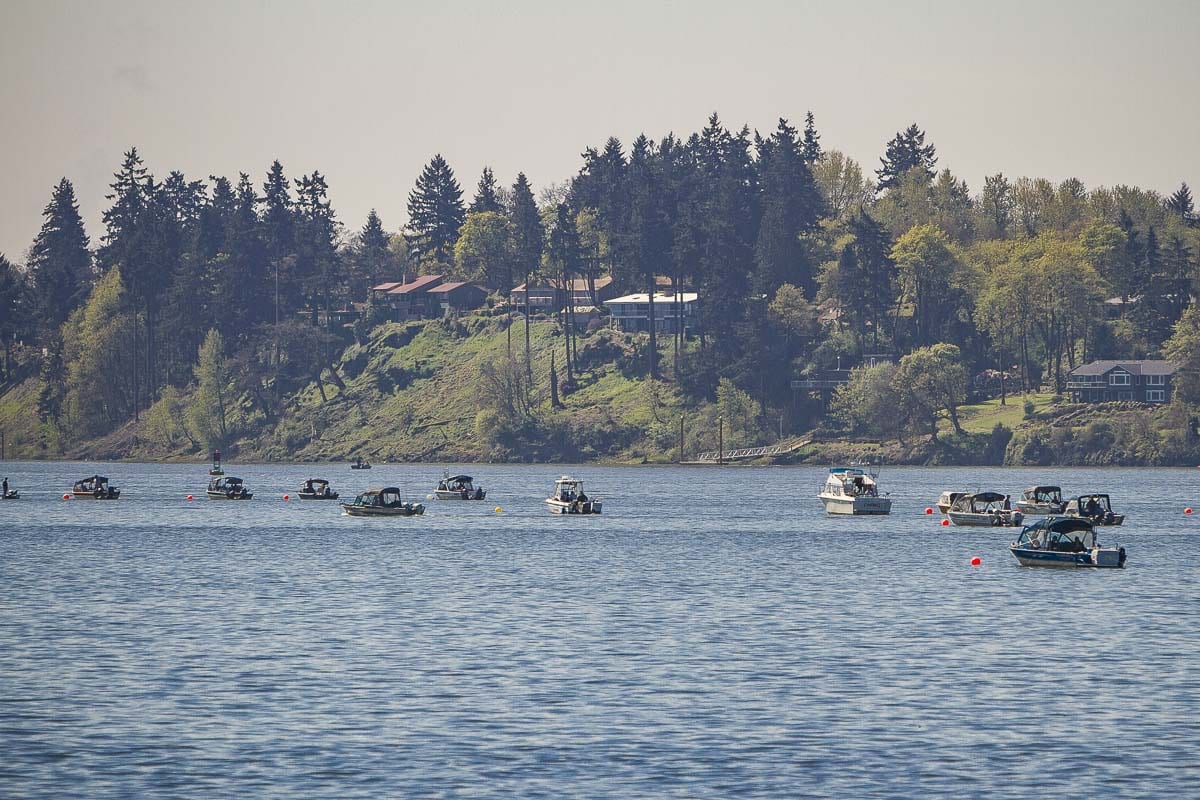According to preseason projections, about 99,300 upriver spring chinook will reach the Columbia this year, down 14 percent from last year and 50 percent below the 10-year average
VANCOUVER — Fishery managers from Washington and Oregon approved this week a sport fishery for spring chinook salmon on the Columbia River that reflects a significant reduction in the number of fish available for harvest this year.

According to preseason projections, about 99,300 upriver spring chinook will reach the Columbia this year, down 14 percent from last year and 50 percent below the 10-year average. Those fish return to hatcheries and spawning areas upriver from Bonneville Dam.
In addition, fishery managers are also expecting much lower returns than last year to several major lower Columbia River tributaries, particularly the Cowlitz and Lewis rivers. On the Cowlitz, this year’s spring chinook run is projected to reach just 11 percent of the 10-year average and fall short of meeting hatchery production goals.
Ryan Lothrop, Columbia River policy coordinator for the Washington Department of Fish and Wildlife (WDFW), said those projections are largely the result of poor ocean conditions, which have complicated fisheries management in recent years.
“Anglers will still find some good fishing opportunities in the Columbia River Basin this spring, but conservation has to be our first concern,” Lothrop said. “We have a responsibility to protect salmon runs listed under the federal Endangered Species Act and get enough fish back to the spawning grounds and hatcheries to support future runs.”
Although salmon fishing is currently open from the mouth of the Columbia River to the Interstate-5 bridge, spring chinook usually don’t arrive in large numbers until mid-to-late March. The new fishing regulations approved today will take effect in the following areas:
- Columbia River below Bonneville Dam: Salmon fishing will open March 1 through April 10 on the Columbia River upstream from Warrior Rock boundary line to Bonneville Dam. Anglers may retain two salmon, two steelhead, or one of each per day, but only one salmon may be a chinook. The lower river downstream from Warrior Rock will be closed to fishing from March 1 through April 10 to conserve spring chinook returning to the Cowlitz and Lewis rivers.
- Tributaries: The Cowlitz and Lewis rivers will also close to salmon fishing March 1 to conserve spring chinook for hatchery escapement needs, but will remain open for hatchery steelhead retention. The Kalama River will remain open to fishing for salmon and steelhead, but the daily limit of adult salmon will be reduced to one fish on March 1.
- Columbia River above Bonneville Dam: Waters above Bonneville Dam to the Oregon/Washington state line above McNary Dam will open to salmon fishing April 1 through May 5. Anglers may retain two salmon, two steelhead, or one of each per day, but only one salmon may be a chinook.
In all open waters, only hatchery salmon and steelhead identified by a clipped adipose fin and healed scar may be retained.
Along with new area restrictions in the lower Columbia, fishery managers also reduced initial harvest limits for upriver spring chinook returning to the upper Columbia and Snake rivers. If those fish return as projected, anglers in the Columbia and Snake rivers will be limited to a total of 4,548 fish, compared to 9,052 last year, prior to a run size updated in May.
Lothrop noted that this year’s projected return of 99,300 upriver spring chinook is the lowest since 2007, but still well above the record-low return of just 12,800 fish in 1995.
“Experience has shown that warm-water ocean conditions present a challenge to salmon survival,” he said. “As in the 1990s, we have observed that cyclical warming effect during the past few years with similar results. During these times, we have to be especially cautious in how we manage the fishery.”
Anglers are strongly advised to review the rules for the waters they plan to fish, available on the department’s website at https://fortress.wa.gov/dfw/erules/efishrules/
WDFW is the primary state agency tasked with preserving, protecting and perpetuating fish and wildlife and ecosystems, while providing sustainable fishing and hunting opportunities.
Information provided by the Washington Department of Fish and Wildlife.




